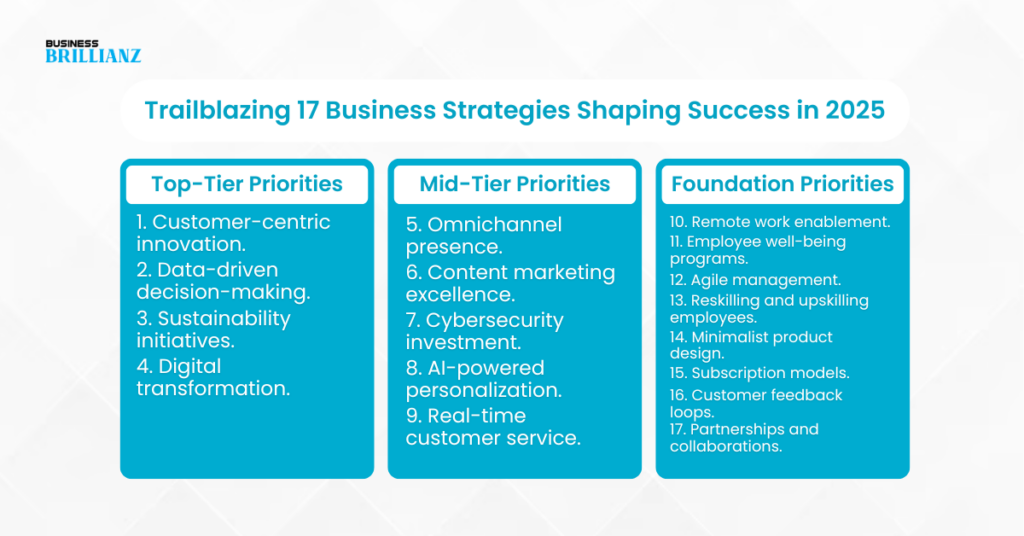Top-Tier Priorities
- Customer-Centric Innovation: Businesses focus on understanding customer needs and preferences to tailor products and services accordingly. This includes offering affordability, accessibility, and solutions that resonate with the target audience’s specific requirements.
- Data-Driven Decision-Making: Leveraging data analytics and insights enables companies to make informed decisions, identify market trends, and develop targeted campaigns. This strategy helps optimize resource allocation and improve overall business efficiency.
- Sustainability Initiatives: Implementing environmentally friendly practices, such as reducing waste, using biodegradable materials, or adopting renewable energy, helps businesses contribute to global sustainability goals while appealing to eco-conscious consumers.
- Digital Transformation: Businesses invest in digital tools and platforms to streamline operations, enhance customer experiences, and maintain competitiveness in an increasingly digital-first world.
Mid-Tier Priorities
- Omnichannel Presence: Integrating online and offline channels creates a seamless and unified shopping experience for customers, ensuring convenience and consistent service quality across all touchpoints.
- Content Marketing Excellence: Developing engaging, value-driven content that educates, entertains, or inspires helps businesses connect with their audience and build long-term loyalty.
- Cybersecurity Investment: Ensuring robust cybersecurity measures protects customer data, prevents breaches, and builds trust in digital transactions and online interactions.
- AI-Powered Personalization: Using artificial intelligence to provide personalized recommendations, offers, or services enhances customer satisfaction and fosters brand loyalty.
- Real-Time Customer Service: Leveraging AI chatbots and other tools to deliver 24/7 customer support improves customer experience by addressing queries and resolving issues instantly.
Foundation Priorities
- Remote Work Enablement: Adopting flexible work policies and providing remote work tools ensures operational continuity and employee productivity, especially during disruptions.
- Employee Well-Being Programs: Prioritizing mental health, physical well-being, and work-life balance leads to happier, healthier, and more productive employees, which benefits the organization.
- Agile Management: Utilizing agile methodologies accelerates project delivery, enhances adaptability to changes, and fosters innovation within teams.
- Reskilling and Upskilling Employees: Continuous learning initiatives help employees stay relevant in a rapidly changing business environment, ensuring the workforce is equipped with necessary skills.
- Minimalist Product Design: Focusing on simplicity and usability in product design appeals to modern consumers who value functionality and aesthetics.
- Subscription Models: Offering subscription-based services provides consistent revenue streams and builds customer loyalty by ensuring regular engagement with the product or service.
- Customer Feedback Loops: Regularly gathering and acting on customer feedback helps businesses improve their offerings and address concerns effectively.
- Partnerships and Collaborations: Building strategic alliances with other organizations enables mutual growth, resource sharing, and enhanced market reach.


